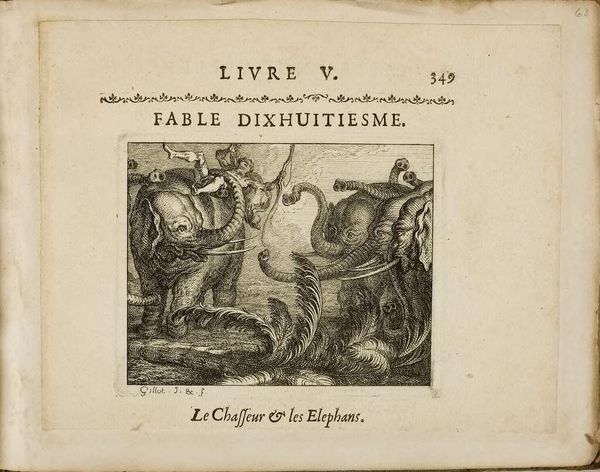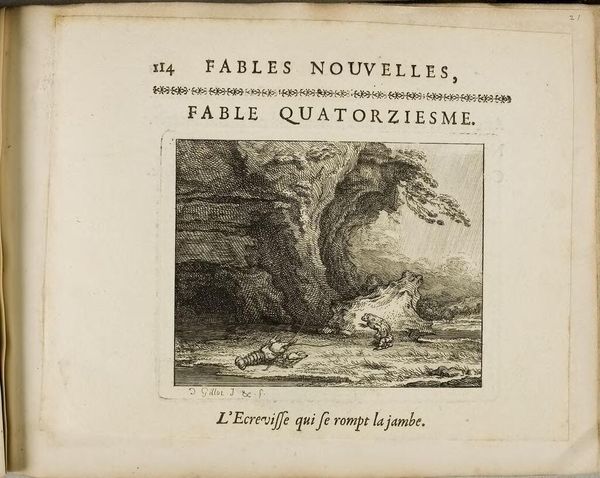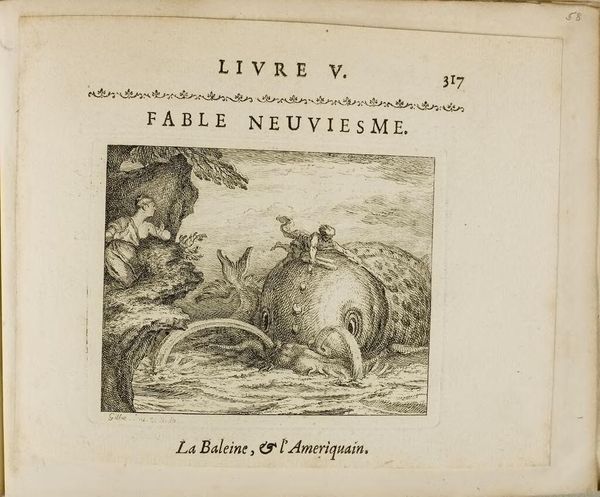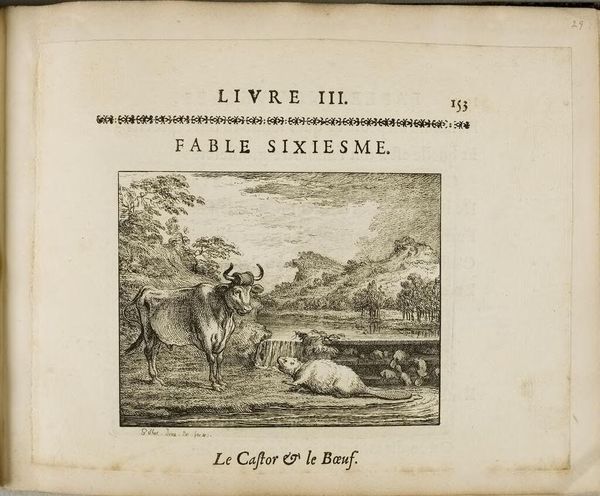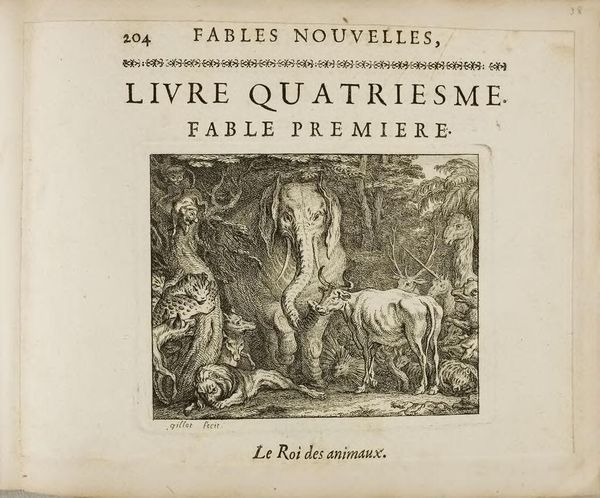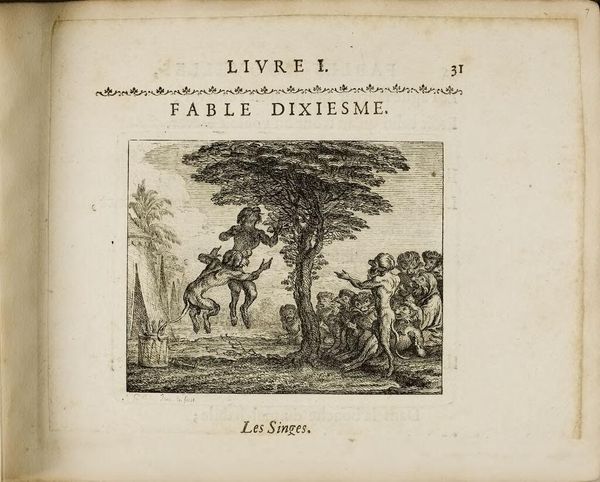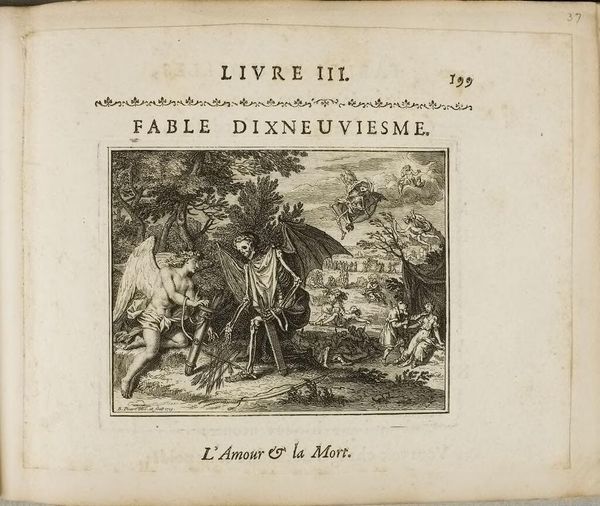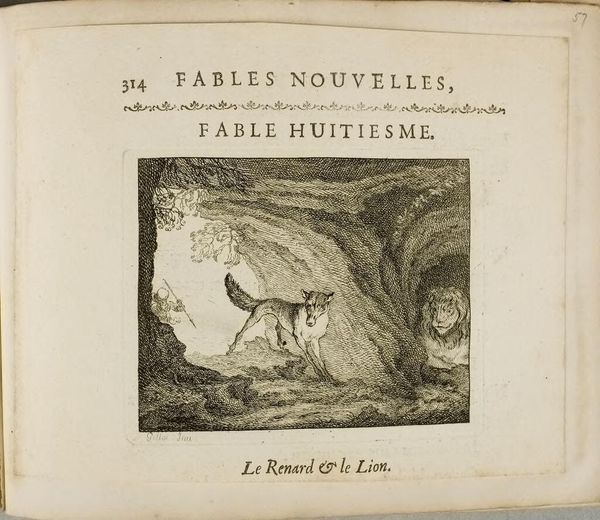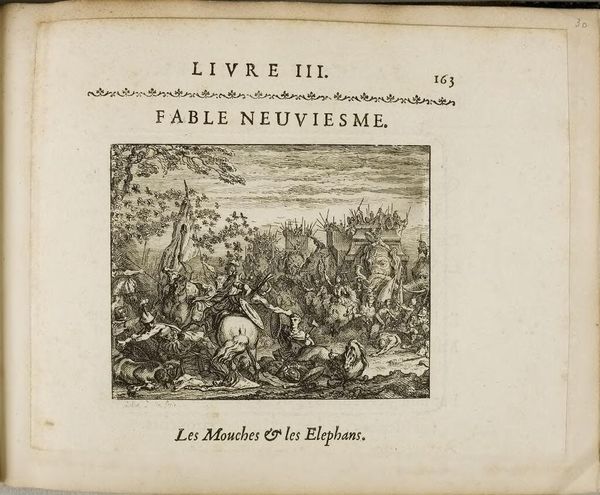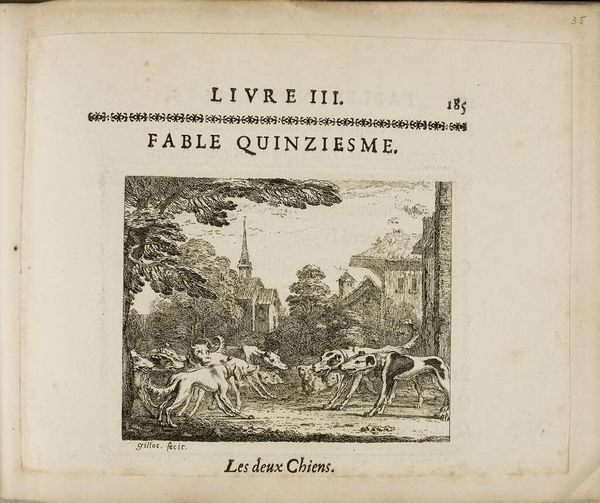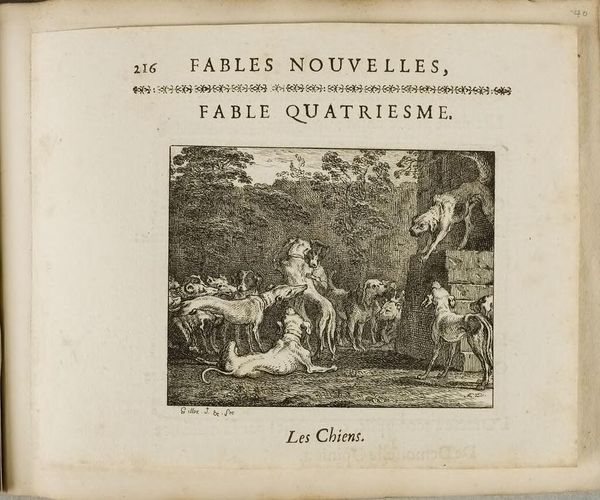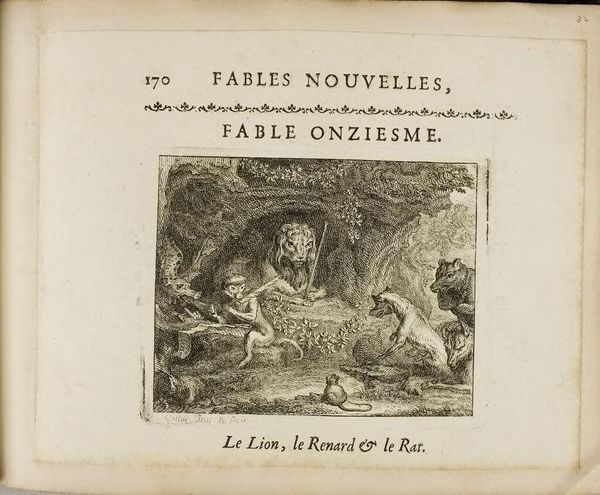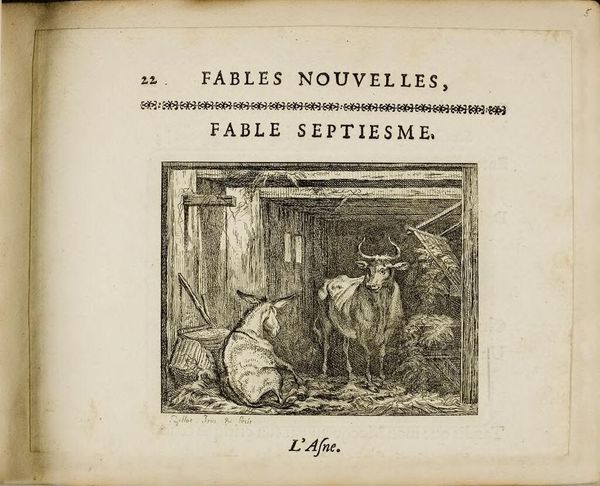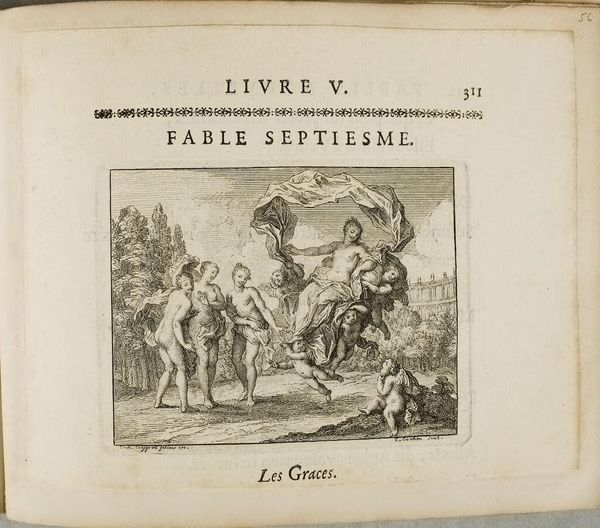
Dimensions: plate: 8.1 x 10.1 cm (3 3/16 x 4 in.)
Copyright: CC0 1.0
Curator: Claude Gillot, born in 1673, gives us “The Lynx and the Mole,” an etching measuring just over 8 by 10 centimeters. My first thought is that this looks like a stage set. Editor: I see that too, a little proscenium. The lynx itself feels very symbolic, standing dominant in the foreground. Is it meant to represent something specific, like sight or predatory power? Curator: It's interesting to consider the social context of this fable. Gillot was working during a time of great social disparity, with strict class structures. The fable itself, and the creation of such an image for dissemination, hint at critiques of power. Editor: The mole, almost pathetic at the lynx’s feet, certainly adds to that reading. Moles have always been associated with hidden knowledge, with things unseen. Is this a commentary on the blindness of power? Curator: It's difficult to say definitively, but I think exploring these readings enriches our understanding of the print and its potential meaning within its historical moment. The work itself, as an etching, makes it possible to easily reproduce this image across a wide network of interested parties. Editor: Ultimately, this small image carries a surprising weight, a dialogue between hunter and hunted, visible and unseen. Curator: Indeed, looking closely at the materials and their use gives us insight into the world in which the work was created and circulated.
Comments
No comments
Be the first to comment and join the conversation on the ultimate creative platform.
